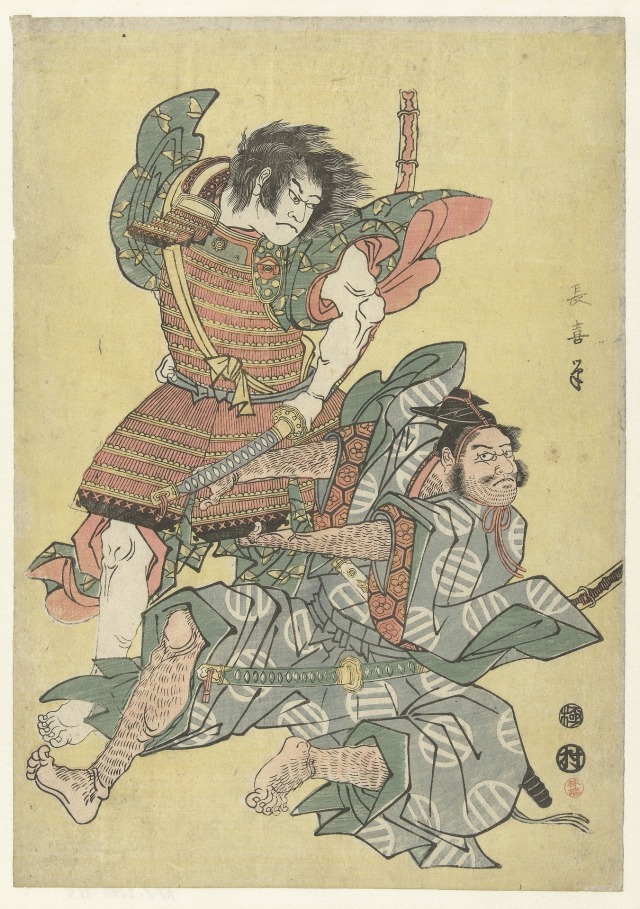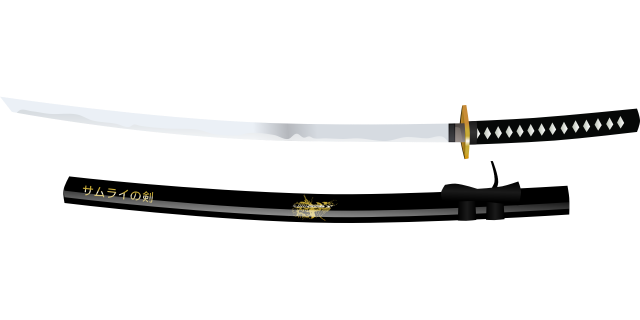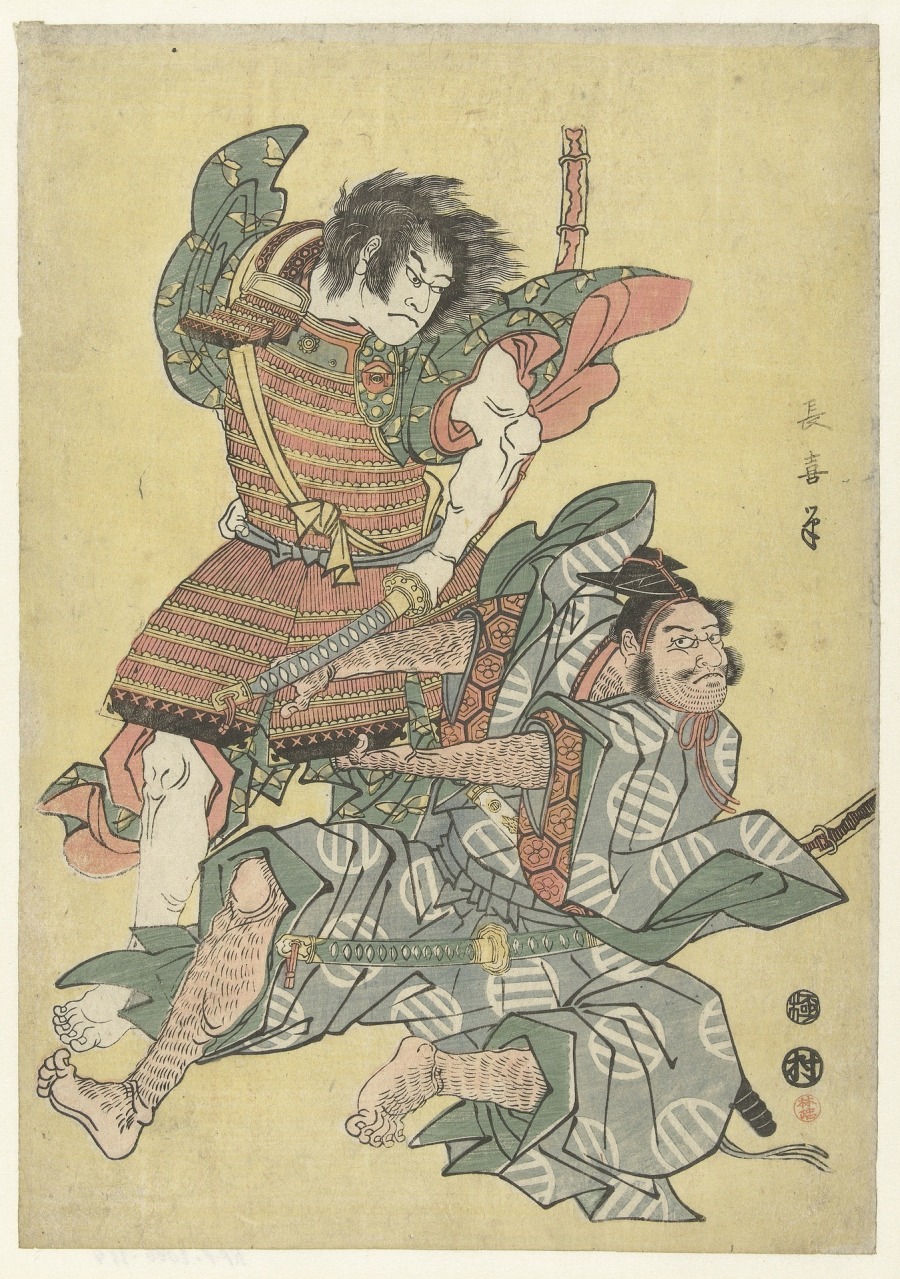What makes a samurai sword different from other swords? Before the katana, Japanese swords followed the style of the Chinese Jian swords, which had straight and double-edged blades. The samurai sword, or katana, on the other hand, has a slender and curved blade. In addition, samurai swords are single-edged and have a circular or squared guard which allows both hands to grip the sword at the same time.
So why did the Japanese samurai curve their sword? Who had the idea to curve the samurai sword blade and make it single-edged, turning it into a katana?
According to The Legend of Amakuni, Amakuni Yasutsuna was the first swordsmith to forge a single-edged, curved blade and is considered the father of the samurai sword.

A very long time ago in feudal Japan—around the year 700 CE—Amakuni was the head of a group of swordsmiths employed by the Emperor of Japan. The Emperor and his warriors would normally honor Amakuni and his son with greetings as they returned from battle. On one particular day, however, the Emperor and his warriors returned and did not look at or speak to Amakuni at all. Amakuni was horrified and felt great shame. Then he felt his heart sink as he saw that most of the samurai warriors’ swords were badly damaged and broken.
When Amakuni took his son to collect the remnants of the swords and inspect the samurai warriors’ broken blades, he saw that they had been badly forged and could not stand up to the challenge of hitting hard objects, such as armor and other weaponry. The memory of the Emperor passing by without so much as a glance toward him ran through Amakuni’s head again. But Amakuni was fiercely determined, so with tears in his eyes, he vowed, “I will make a sword that will not break!”

Amakuni took his son, Amakura, to the forge and sealed them both in. For seven days and seven nights, Amakuni and Amakura prayed to the Shinto gods. Finally on the seventh night, the gods and goddesses—or kami—answered both Amakuni and his son in one dream, shared by both. In the dream, the kami revealed a single-edged sword with a marginally curved blade.
As Amakuni and Amakura awoke to find the first rays of sunlight filtering into the forge, they knew what they had to do. Amakuni searched until he found the finest iron sand ore available, then refined it into steel. Without speaking a word and without rest, Amakuni and Amakura worked on forging the sword until thirty one days later, it resembled the sword in the dream sent to them by the kami.
Amakuni and Amakura appeared out from within the forge weary and bleak with the curved, single-edged samurai sword—the first katana. The other swordsmiths examined this blade and thought Amakuni and Amakura to be insane; this sword would not withstand an onslaught, they thought. Yet Amakuni and Amakura persisted—grinding and polishing their new samurai sword. For the next several months, Amakuni and Amakura perfected their methods, forging many upgraded swords, and presenting the best they had to offer to the Emperor and his warriors.
Then another war broke out the following spring; the Emperor and his warriors set off with Amakuni’s katanas. When the samurai warriors returned, not one katana had been broken, and as the Emperor passed by Amakuni, he looked over, smiled, and told him, “You are truly a master swordmaker.”

Amakuni went on to achieve immortality through the vast quantities of blood spilled by the katana blades he forged … or so The Legend of Amakuni tells us.
Today, the Kogarasu Mara, a unique sword exhibiting qualities of both the Chinese Jian and Japanese katana blades, and rumored to have been forged by Amakuni, is held at the Japanese Museum of the Imperial Collections.


